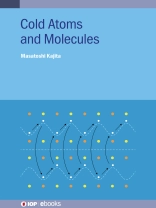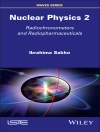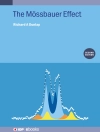This book introduces the preparation, measurement and properties of ultra-cold atoms and molecules at a level accessible to advanced undergraduate students or for researchers approaching the subject from different specialities. Including a review of cooling techniques, the book focuses on the behaviour and applications of both ultra-cold atoms and molecules, and how they are shaping research in atomic physics, quantum optics, condensed matter physics, statistical mechanics, quantum information processing, quantum simulators and finding applications in ultra-high-precision atomic clocks and quantum metrology. Readers of this text should develop an understanding of the techniques used to cool, trap, manipulate and perform measurements on ultra-cold atoms and molecules, as well as how such systems are in being used in a range of exciting areas of modern physics.
Key Features
- Provides an accessible overview for advanced undergraduate students or for researchers approaching the subject from different specialities.
- Extensive coverage encompassing preparation, properties and applications
- Includes references to key papers
- Mathematical appendices
Mục lục
Preface
Acknowledgement
About the Author
1 Properties of gaseous atoms and molecules
2 Role of laser light to search the structure of atoms and molecules
3 Physics of cold atoms
4 Physics of cold molecules
5 Applications of Cold Atoms and Molecules
6 Conclusion
A1 Boltzmann energy distribution
A2 Angular momentum
A3 Energy state of hydrogen atoms
A4 Harmonic potential
A5 Stark and Zeman energy shift
A6 Mystery of the gravitational interaction of the antimatter with matter
A7 Collision by the electric dipole-dipole interaction
Giới thiệu về tác giả
Born and raised in Nagoya, Japan, Dr Kajita graduated from the Department of Applied Physics, at the University of Tokyo in 1981 and obtained his Ph. D. from the Department of Physics, at the University of Tokyo in 1986. After working at the Institute for Molecular Science, he joined the Communications Research Laboratory (CRL) in 1989. In 2004, the CRL was renamed the National Institute of Information and Communications Technology (NICT). In 2009, he was guest professor at the Provence Universite, Marseille, France.












